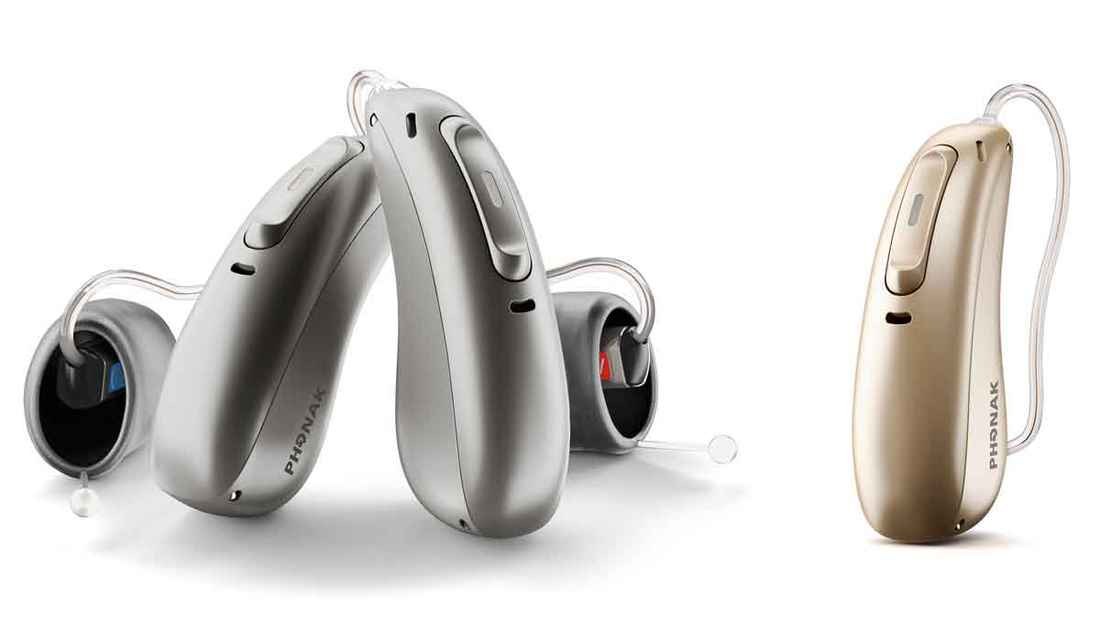Phonak has announced the introduction of a new CROS (Contralateral Routing Of Signal) device and a very interesting new receiver called ActiveVent for the Paradise platform. While the CROS is a niche device, primarily for people with unilateral or asymmetrical hearing loss, the ActiveVent, however, is a whole different kettle of slippery swimming things. I welcome both devices, to be honest, it's about time Phonak sorted out a new CROS, the last one was years old. The ActiveVent receivers open up a whole new strategy for people with typical high-frequency hearing loss that will make things much better, however, it has pros and cons. In this article, I will focus on ActiveVent, primarily because there is a lot to unpack. In a second article, I will cover Paradise CROS. Let's talk ActiveVent.

Open and Closed Vents
Before I go into the ActiveVent, I need to cover open and closed vents, why they are used and finally, why a closed vent makes sense for better hearing. Open fit or open vent is only something that a professional has to consider when a user has good low-frequency hearing. If a user has good low-frequency hearing but a high-frequency hearing loss, it makes sense for us to use an open fit or open vent. It delivers a more natural experience, allows low-frequency sound through naturally and ensures that a user does not suffer from occlusion.
Open Fit Gives Comfort, Closed Fit Gives Benefit
However, an open fit or open vent actually works against all of the features and strategies that the hearing aid manufacturer has designed. In particular, it messes with the directional microphone inputs. To sum it up simply, open-fit gives comfort, closed fit is best to activate all of the features in the hearing aids. So up to now, when dealing with a typical high-frequency hearing loss, it has always been a compromise between comfort and efficacy.
When Does it Matter?
The trade-off between open fit and closed fit matters for streaming audio like music and phone calls and in noisy situations. A closed fit delivers a better experience in those situations but if someone has good low-frequency hearing it will irritate them greatly everywhere else. With ActiveVent, users will now have the best of both worlds, an open fit that converts to a closed fit in some situations. It's not all pink clouds and rainbows though, there will still be pros and cons.

How it Works
The ActiveVent is a completely new intelligent receiver design that has a mechanical venting tool. It can exist in an open state or a closed state. The management of which state is guided by the hearing aid management system, in the case of Paradise, Autosense. When Autosense identifies the sound situation to correspond with the use of a closed vent, such as audio streaming or Speech in Loud Noise, it closes the vent in the receiver to deliver the best experience.
For best effect, the ActiveVent needs to be used with a custom tip made of titanium. That ensures that the parameters are kept consistent during use. The ActiveVent can be used with a generic tip, however, it should really only be used during a trial phase.
The Pros
The pros of this new strategy are this:
- Much better experience with streamed audio
- Far better experience in noise
- The benefits of both open and closed fit.
- Available for every level of technology
The Cons
The cons of this strategy are this:
- Custom tip to be used
- Has to be taken care of consistently
- Has to be replaced every six months
- An extra charge for the receiver
- An audible click when activated
- Possible occlusion on own voice when the vent is closed
- Only available with rechargeable hearing aids
In fairness, if we take a look at the cons, a custom tip isn't really a bad idea, it offers a solid, secure fit. You should really be caring for your receivers one way or the other. The extra cost is something that you need to consider in your budget requirements. While Phonak says every six months, many of the test users are using them for up to eight months without issue. I would feel that the audible click would be reassuring, it would let me know it was working right! The occlusion is a whole different thing, for me, it would probably be a deal-breaker.
I do not like occlusion, it drives me insane. In fairness, that is because I have pressure issues in my mid-ears because of nasal issues. Occlusion drives me quite mad. The way the ActiveVent works is basically to occlude your ear canals during certain sound situations. That ensures that you get the absolute fullest benefit of the hearing aids. The problem is, that when you speak during these situations, you will be occluded.
In a music streaming situation, that won't be an issue, you won't be speaking. However, in a phone call situation, or a speech in loud noise situation, you will be. I haven't tested the ActiveVents yet, and I don't know how they will work for me. When I get a chance, I will let you know. Having said that, this is something you need to be aware of.
A Game Changer!!!
I have seen people label the ActiveVent as a game-changer. It is a fantastic move forward and the research and design team should be hugely proud of what they have delivered. I think it is the first step forward in a strategy that could become a paradigm shift for hearing aid efficacy for people with typical high-frequency loss.
While at the moment, the strategy works in an on and off way for sound situations, it could evolve to be an on and off state based on whether you were talking or not. Now that would really be a game-changer, it would deliver complete comfort while you spoke and optimal performance instantaneously while you listened.
That is a pipe dream right now, but the rockstars at Phonak R&D have taken the very first step towards it. We should all thank them, believe me. Like us on Facebook by clicking the button below to keep up with our latest utterances. Alternatively, if you don't like Facebook, sign up for the newsletter below. It is important to remember, a hearing aid isn't properly fitted unless they do Real Ear Measurement.










